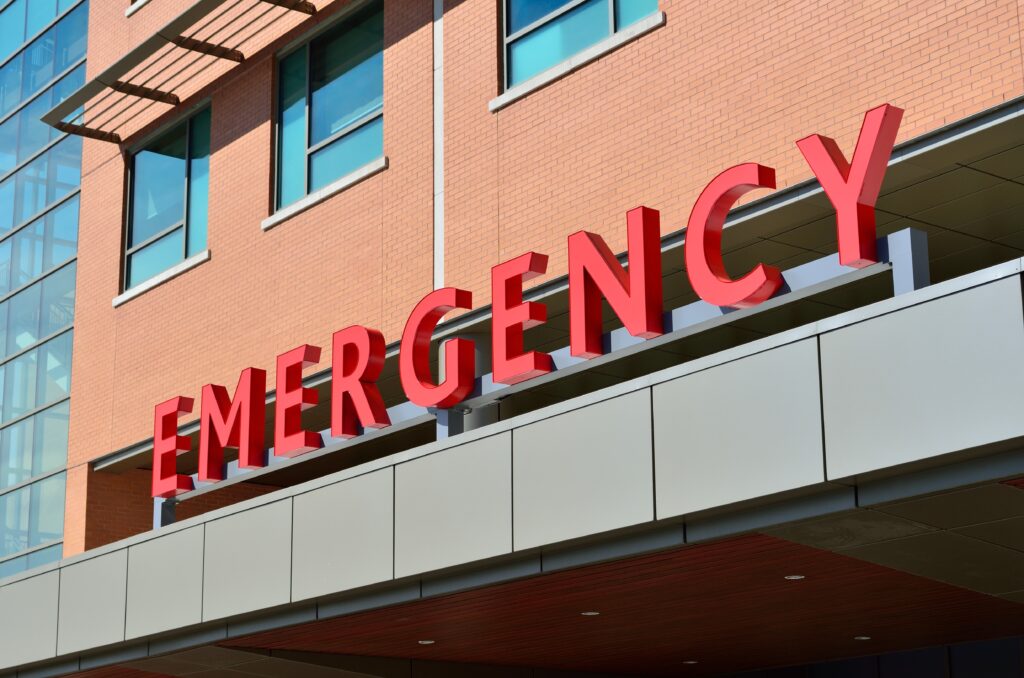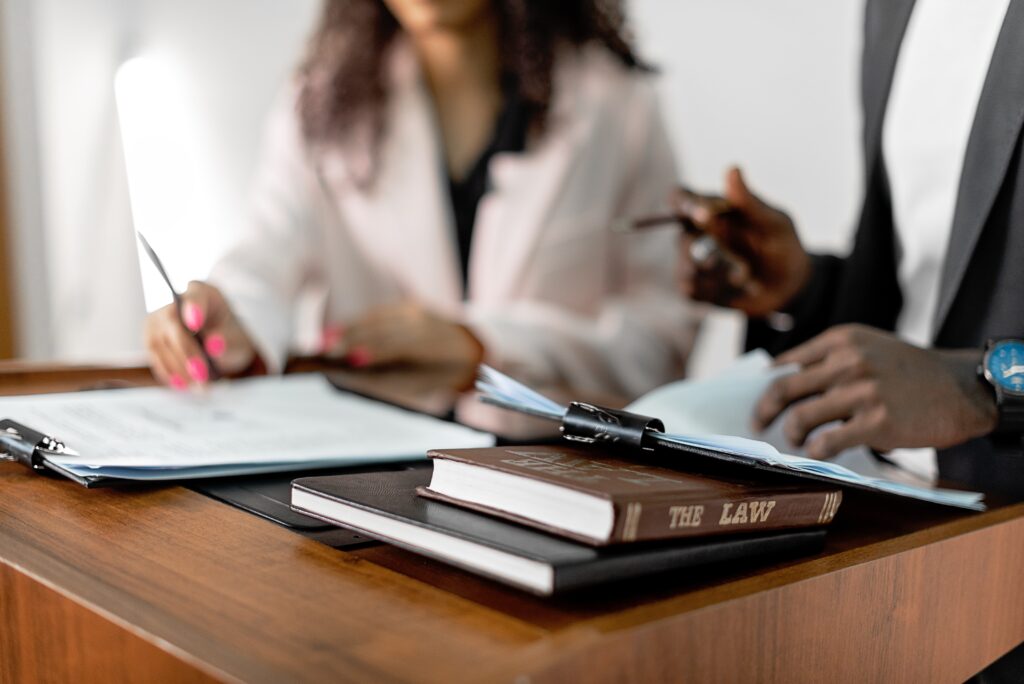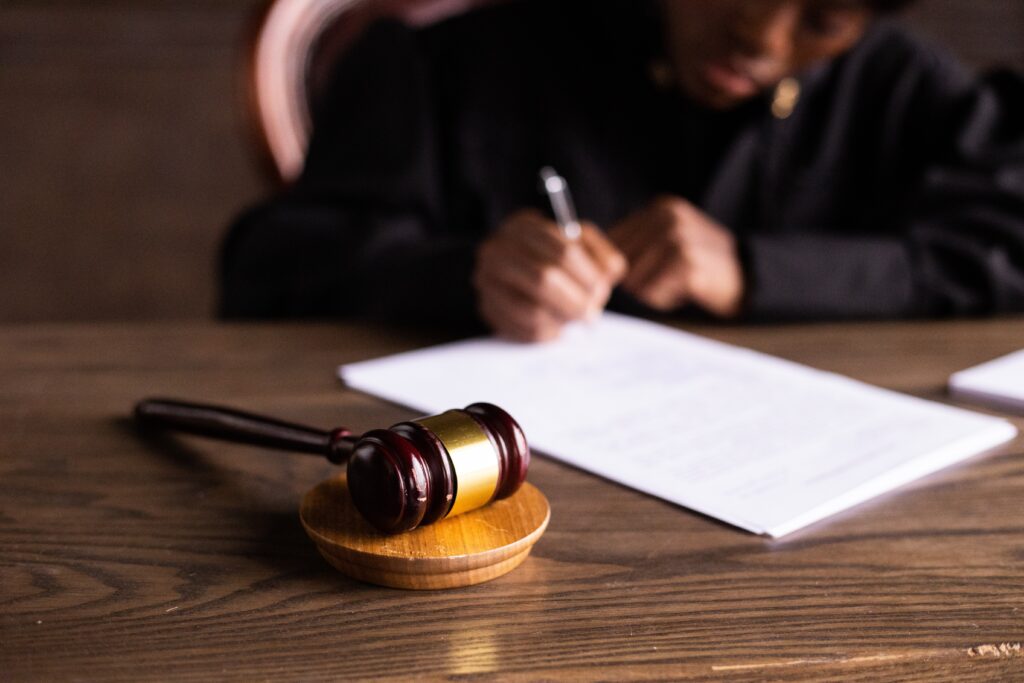
Car accidents in Chicago and most areas are unfortunate and often unexpected events that can have significant and lasting impacts on individuals’ lives. Beyond the immediate physical and emotional toll, navigating the complexities of the aftermath, especially when pursuing a Chicago personal injury claim, can be a daunting process. In this comprehensive guide, we will delve into the crucial steps individuals need to take after a car accident to ensure they understand and successfully navigate the personal injury claim process.
A. Brief Overview of the Prevalence of Car Accidents and Resulting Personal Injuries
The roads are a bustling network of vehicles, and despite numerous safety measures, accidents remain a common occurrence. According to recent statistics, thousands of car accidents happen daily, leading to a substantial number of personal injuries. Understanding the prevalence of these incidents underscores the importance of being prepared and informed about the subsequent legal processes to safeguard one’s rights.
B. Importance of Understanding the Personal Injury Claim Process
The aftermath of a car accident involves a myriad of challenges, from immediate concerns such as seeking medical attention to the longer-term process of pursuing compensation for personal injuries. Recognizing the significance of comprehending the personal injury claim process is crucial for individuals to assert their rights, secure fair compensation, and effectively navigate the intricacies of insurance negotiations or legal proceedings.
C. Purpose of the Article: Guiding Individuals Through the Key Steps in Pursuing a Personal Injury Claim After a Car Accident
This article aims to serve as a roadmap for those grappling with the aftermath of a car accident. By providing a step-by-step guide, we seek to empower individuals to make informed decisions, protect their interests, and, ultimately, facilitate a smoother personal injury claim process. Whether dealing with insurance companies, consulting with auto accident attorneys in Chicago, or preparing for possible litigation, a well-informed approach can make a significant difference in the outcome of a personal injury claim.
II. Initial Steps After a Car Accident
A. Ensuring Safety and Seeking Medical Attention
The immediate aftermath of a car accident can be chaotic and disorienting. Prioritize safety by moving to a safe location, away from oncoming traffic, and assessing your well-being. Even if injuries seem minor, seeking medical attention is crucial. Some injuries may not manifest symptoms immediately, and a medical evaluation can uncover underlying issues. Always prioritize your health and well-being.
B. Reporting the Accident to Law Enforcement
Contacting law enforcement is a vital step after a car accident, regardless of its severity. Call the police to the scene, and ensure a comprehensive accident report is filed. This official document serves as a critical piece of evidence when filing a personal injury claim. Provide accurate and detailed information to the responding officers, and request a copy of the report for your records.
C. Gathering Evidence at the Scene (Photos, Witness Information, etc.)
Collecting evidence at the scene is instrumental in establishing the facts of the accident. Take photographs of the vehicles involved, the surrounding area, and any relevant road signs or signals. Additionally, gather contact information from any witnesses present. Their statements may prove invaluable in corroborating your account of the events leading to the accident. Swift and thorough evidence collection significantly strengthens your position when dealing with insurance companies or legal proceedings.
D. Exchanging Contact and Insurance Information with the Other Party Involved
Exchange contact and insurance information with the other party involved in the accident. Obtain their name, phone number, address, insurance company, and policy number. Providing accurate information and receiving the same from the other party ensures a smooth claims process. This information is vital when notifying your insurance company and, if necessary, when pursuing legal action. Be sure to document the details accurately to avoid complications in the later stages of the personal injury claim process.
III. Seeking Medical Treatment and Documenting Injuries
A. Importance of Prompt Medical Attention
Prompt medical attention is the cornerstone of any post-car accident strategy. Even if injuries seem minor initially, seeking immediate medical care is crucial. Delays in treatment not only jeopardize one’s health but also create challenges when establishing a direct link between the accident and the injuries sustained. Medical professionals can assess and document injuries, ensuring a timely and accurate record of the accident’s impact on your well-being.
B. Documenting Injuries, Treatments, and Medical Expenses
Thorough documentation serves as a powerful tool when pursuing a personal injury claim. After seeking medical attention, diligently record detailed information about your injuries, treatments received, and associated medical expenses. This includes doctor’s notes, diagnostic tests, prescriptions, and receipts for medical services. A comprehensive record not only strengthens your case but also provides a clear narrative of the extent of your injuries and the financial toll incurred due to medical treatments.
C. Retaining Medical Records and Bills as Crucial Evidence
The preservation of medical records and bills is paramount for building a robust case. Keep a organized file containing all relevant documents, ensuring easy accessibility when needed. These records serve as tangible evidence in establishing the connection between the accident and your injuries. Insurance companies and, if necessary, the court, rely heavily on these documents to determine the extent of damages. By retaining and organizing medical records and bills, you enhance your ability to present a compelling and well-documented case for fair compensation.
IV. Contacting Insurance Companies
A. Notifying Your Insurance Company About the Accident
Promptly informing your insurance company about the accident is a crucial step in the aftermath of a car collision. Contact your insurance provider as soon as possible to report the incident. Be prepared to provide detailed information, including the date, time, and location of the accident, a description of damages, and any injuries sustained. Timely notification helps initiate the claims process and ensures that you comply with the terms and conditions of your insurance policy.
B. Dealing with the Other Party’s Insurance Company
When dealing with the other party’s insurance company, approach the situation with caution. While it’s important to provide accurate information, avoid making detailed statements about fault or accepting blame. Insurance adjusters may attempt to gather information that could be used against you during the claims process. Direct the other party’s insurer to communicate with your attorney, if you have one, and keep conversations focused on the essential facts of the accident.
C. Understanding Your Insurance Coverage and Policy Limits
Understanding your insurance coverage and policy limits is vital for making informed decisions during the claims process. Review your insurance policy to ascertain the types and amounts of coverage you have. Pay attention to liability limits, comprehensive coverage, and any additional protections you may have purchased. Recognizing your policy limits is crucial when negotiating with insurance companies and determining the scope of potential compensation. If you have any uncertainties about your coverage, consult with your insurance agent or legal counsel for clarification. Being well-informed about your insurance policy empowers you to navigate the personal injury claim process more effectively.


V. Consultation with an Attorney
A. Reasons to Hire a Personal Injury Attorney
After a car accident, the decision to hire a Chicago personal injury lawyer is a pivotal one, and it is essential to understand the reasons behind this choice. Some compelling reasons to seek legal representation include:
Legal Expertise: Personal injury law can be complex, and an experienced attorney understands the nuances of the legal system, helping you navigate potential pitfalls.
Maximizing Compensation: Attorneys are skilled negotiators who can help you secure the maximum compensation for your injuries, damages, and other losses.
Proving Liability: Establishing fault and liability is a critical aspect of a personal injury claim, and an attorney can assist in building a strong case supported by evidence.
Dealing with Insurance Companies: Attorneys have experience handling insurance companies and can advocate on your behalf, protecting your rights and ensuring fair treatment.
Legal Representation in Court: If negotiations fail, an attorney can guide you through the litigation process, representing your interests in court and advocating for a favorable outcome.
B. Choosing the Right Attorney for Your Case
Selecting the right personal injury attorney is a crucial step toward a successful claim. Consider the following factors when choosing an attorney:
Experience: Look for an attorney with a proven track record in handling personal injury cases, particularly those similar to your situation.
Specialization: Choose an attorney who specializes in personal injury law, as they possess the specific expertise needed for these cases.
Reputation: Research the attorney’s reputation through reviews, testimonials, and references from previous clients.
Communication: Opt for an attorney who communicates effectively, keeping you informed about the progress of your case and addressing any concerns you may have.
Fee Structure: Understand the attorney’s fee structure, whether it’s contingency-based or hourly, and discuss potential costs during the initial consultation.
C. Initial Consultation and Case Evaluation
The initial consultation with a personal injury attorney is a critical step in assessing the viability of your case. During this meeting:
Provide Details: Be prepared to share details about the accident, injuries, and any communication with insurance companies.
Ask Questions: Inquire about the attorney’s experience, success rate, and approach to handling personal injury cases.
Discuss Fees: Clarify the attorney’s fee structure, ensuring transparency about costs and potential expenses.
Evaluate Compatibility: Assess whether you feel comfortable working with the attorney and if they demonstrate a genuine interest in your case.
Case Strategy: Gain insight into the attorney’s initial assessment of your case, potential challenges, and the strategy they propose for pursuing compensation.
The initial consultation and case evaluation serve as a foundation for a productive attorney-client relationship and contribute to informed decision-making throughout the personal injury claim process.
VI. Filing the Personal Injury Claim
A. Preparation of the Demand Letter
The demand letter is a crucial document that outlines your case, damages, and the compensation you are seeking. In preparing the demand letter:
Detailed Account: Provide a detailed account of the accident, including the circumstances, injuries sustained, and the impact on your life.
Medical Documentation: Include comprehensive medical documentation, such as records, bills, and expert opinions, to support your claim for damages.
Financial Losses: Outline financial losses, including medical expenses, lost wages, and any other relevant costs incurred due to the accident.
Emotional Impact: Address the emotional toll of the accident, detailing any pain and suffering, emotional distress, or diminished quality of life.
Clear Settlement Demand: Clearly state the amount of compensation you are seeking for your losses and why it is justified based on the evidence presented.
B. Submission of the Claim to the At-Fault Party’s Insurance Company
Once the demand letter is prepared, it is submitted to the at-fault party’s insurance company. During this phase:
Timely Submission: Send the demand letter promptly to initiate the claims process. Many jurisdictions have statutes of limitations, and timely submission is crucial to preserving your right to compensation.
Certified Mail: Send the demand letter via certified mail, return receipt requested, to create a record of the submission and ensure it reaches the intended recipient.
Claim Acknowledgment: The insurance company will acknowledge receipt of the claim and begin their investigation, which may involve reviewing evidence, statements, and conducting their own assessments.
C. Negotiation Process and Settlement Discussions
Negotiating a fair settlement is a pivotal stage in the personal injury claim process. During negotiations:
Professional Communication: Maintain professional and respectful communication with the insurance adjuster, focusing on the facts and merits of your case.
Review of Initial Offer: Carefully review any initial settlement offers, and consider consulting with your attorney before accepting or countering.
Counteroffers and Adjustments: Be prepared for a series of counteroffers and negotiations as both parties work towards an agreeable settlement amount.
Legal Guidance: If negotiations stall or become challenging, seek guidance from your attorney, who can provide valuable insights, assess the fairness of offers, and advise on the best course of action.
Settlement Agreement: Once an agreement is reached, ensure that all terms are documented in a formal settlement agreement, outlining the agreed-upon compensation and any other relevant conditions.
Successful negotiation and settlement discussions bring closure to the personal injury claim process, providing compensation for the damages you’ve suffered due to the car accident.
VII. Litigation and Legal Proceedings
A. Filing a Lawsuit if Negotiations Fail
If negotiations with the at-fault party’s insurance company fail to yield a satisfactory settlement, the next step is filing a lawsuit. This involves:
Consultation with Your Attorney: Discuss the decision to litigate with your Chicago personal injury lawyer, who will guide you through the process and assess the merits of your case in a courtroom setting.
Court Filing: Your attorney will file a formal complaint with the appropriate court, outlining the details of the case, the parties involved, and the compensation sought.
Service of Process: The defendant is served with a summons and a copy of the complaint, officially notifying them of the lawsuit and their legal obligations to respond.
B. Discovery Phase: Gathering Evidence and Exchanging Information
The discovery phase is a critical part of the legal proceedings, involving the exchange of information and evidence between the parties. This phase includes:
Interrogatories: Written questions are exchanged between the parties, requiring detailed responses under oath.
Document Requests: Both sides request relevant documents from each other, such as medical records, accident reports, and any other evidence related to the case.
Depositions: Sworn testimony is taken from witnesses, including the parties involved, experts, and other relevant individuals. This helps to establish the facts of the case and can be used in court.
Expert Witnesses: Each party may present expert witnesses who can provide professional opinions on issues relevant to the case, such as medical experts or accident reconstruction specialists.
C. Pre-Trial Motions and Settlement Conferences
Before the case goes to trial, there are various pre-trial motions and conferences that may occur:
Motion to Dismiss: Either party may file a motion to dismiss the case if they believe there is insufficient evidence or legal grounds. The court will then decide whether the case proceeds to trial.
Motion for Summary Judgment: A request to the court to make a judgment based on the evidence presented without going to trial. This is typically filed if one party believes there are no genuine issues of material fact.
Settlement Conferences: Courts often encourage parties to participate in settlement conferences before proceeding to trial. These conferences aim to facilitate a resolution without the need for a full trial.
Navigating the litigation process requires careful consideration of legal strategies, effective communication with your attorney, and a commitment to presenting a compelling case in court. The goal remains achieving fair compensation for the injuries and damages suffered in the car accident.
VIII. Going to Trial
A. Preparing for Trial with Your Attorney
Preparing for trial is a collaborative effort between you and your attorney. This phase involves:
Legal Strategy: Finalize the legal strategy for presenting your case, including the key arguments, evidence, and witnesses that will be crucial to your claim.
Witness Preparation: Work with your attorney to prepare witnesses for testimony, ensuring they are familiar with the process and can articulate their statements clearly and persuasively.
Evidence Compilation: Gather and organize all evidence that will be presented during the trial, including documents, photographs, and any expert reports.
Trial Brief: Your attorney will create a trial brief outlining the case’s key points, legal arguments, and the evidence supporting your claims.
B. Presenting Evidence and Witnesses
During the trial, the presentation of evidence and witnesses is a critical aspect of building a persuasive case:
Opening Statements: Both sides present opening statements, outlining their respective positions and what they intend to prove during the trial.
Direct Examination: Your attorney will question your witnesses, allowing them to provide testimony and present evidence that supports your case.
Cross-Examination: The opposing party’s attorney will cross-examine your witnesses, aiming to challenge their credibility or introduce doubt regarding the presented evidence.
Introduction of Evidence: Your attorney will introduce relevant documents, photographs, and other tangible evidence to strengthen your case.
Expert Testimony: If applicable, expert witnesses may provide specialized knowledge or opinions that support your claims.
C. Cross-Examination and Closing Arguments
The later stages of the trial involve challenging the opposing party’s case and summarizing your own:
Cross-Examination: Your attorney will cross-examine the opposing party’s witnesses, attempting to highlight inconsistencies, question credibility, or reveal weaknesses in their testimony.
Rebuttal Witnesses: Your attorney may present rebuttal witnesses or evidence to counter points raised during the opposing party’s case.
Closing Arguments: Attorneys present closing arguments, summarizing the evidence, highlighting key points, and persuasively making the case for why the jury should rule in your favor.
Jury Instructions: The judge provides instructions to the jury on the relevant laws and how they should consider the evidence presented during the trial.
Going to trial is a rigorous process that demands thorough preparation, effective communication with your attorney, and the ability to articulate your case compellingly in the courtroom. The outcome rests in the hands of the judge or jury, who will assess the evidence and arguments presented to reach a verdict.
IX. Post-Trial Considerations
A. Verdict and Judgment
Deliberation: After the trial, the judge or jury will deliberate to reach a verdict. This decision determines whether the defendant is liable for the damages claimed by the plaintiff.
Verdict Announcement: The court will announce the verdict in a public setting. The verdict may be in favor of the plaintiff (awarding damages), the defendant (denying damages), or a partial decision.
Judgment Issuance: If the verdict is in favor of the plaintiff, the court will issue a judgment outlining the awarded damages and any other relevant orders.
B. Collecting the Awarded Damages
Payment Process: After obtaining a judgment in your favor, the process of collecting the awarded damages begins. The defendant, typically through their insurance company, is obligated to pay the specified amount.
Negotiation or Settlement: In some cases, parties may negotiate the terms of payment. Your attorney can assist in ensuring a fair and timely settlement.
Enforcement Actions: If the defendant refuses to pay, legal mechanisms, such as garnishment of wages or seizure of assets, may be pursued to enforce the judgment.
C. Appeals Process, if Necessary
Assessment of Verdict: If dissatisfied with the verdict, either party may consider an appeal. However, an appeal is not a retrial; rather, it focuses on legal errors or irregularities during the trial process.
Consultation with Attorney: Before filing an appeal, consult with your attorney to evaluate the grounds for appeal and the likelihood of success. Appeals are typically based on legal errors rather than disagreements with the jury’s factual findings.
Appellate Court Proceedings: The appeals process involves presenting legal arguments and briefs to a higher court. Both parties may have the opportunity to present their case, and the appellate court will review the trial record and legal arguments.
Appellate Decision: The appellate court may affirm the lower court’s decision, modify the judgment, or order a new trial. In some cases, the decision of the appellate court can be further appealed to a higher court.
Final Resolution: Once the appeals process concludes, the decision becomes final. If the judgment is affirmed, the collection process continues. If a new trial is ordered, the litigation process restarts.
Post-trial considerations are crucial for both parties, determining the final outcome of the case and the enforcement of any awarded damages. Consulting with your attorney and understanding the potential outcomes in advance can help you navigate this phase effectively.
X. Conclusion
A. Recap of the Personal Injury Claim Process After a Car Accident
In conclusion, navigating the personal injury claim process after a car accident involves a series of crucial steps. From the initial moments at the accident scene to potential litigation and post-trial considerations, each stage plays a vital role in securing fair compensation for injuries and damages. It is essential to understand the intricacies of the process and be proactive in protecting one’s rights.
B. Emphasizing the Importance of Legal Guidance and Thorough Documentation
Throughout this journey, the importance of seeking legal guidance cannot be overstated. An experienced personal injury attorney can be a valuable ally, offering expertise in negotiations, courtroom proceedings, and the complexities of the legal system. Thorough documentation of injuries, treatments, and expenses is the foundation of a strong case, reinforcing the narrative of the accident’s impact and contributing to the pursuit of fair compensation.
C. Encouraging Individuals to be Proactive in Protecting Their Rights and Pursuing Fair Compensation
In the aftermath of a car accident, individuals are urged to be proactive in protecting their rights. From promptly seeking medical attention and reporting the incident to law enforcement to carefully documenting evidence and engaging in constructive communication with insurance companies, taking decisive steps can significantly impact the success of a personal injury claim. By being vigilant and assertive, individuals can enhance their chances of securing the compensation they rightfully deserve.
In essence, the personal injury claim process demands a combination of legal acumen, strategic thinking, and a commitment to thorough documentation. By following these guidelines and seeking professional assistance when needed, individuals can navigate the complexities of the process and work towards achieving a fair resolution for the physical, emotional, and financial toll incurred after a car accident.

Dog bite lawsuit payouts are often worth between $30,000 and $50,000. If the attack left you with only minor injuries, be prepared to receive a smaller offer. The dog owner can make you an offer, to avoid going through the legal system.